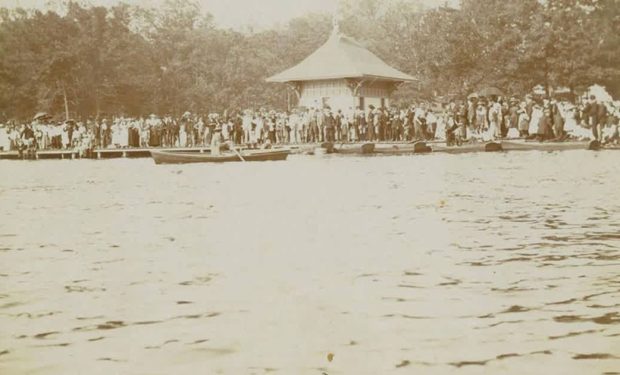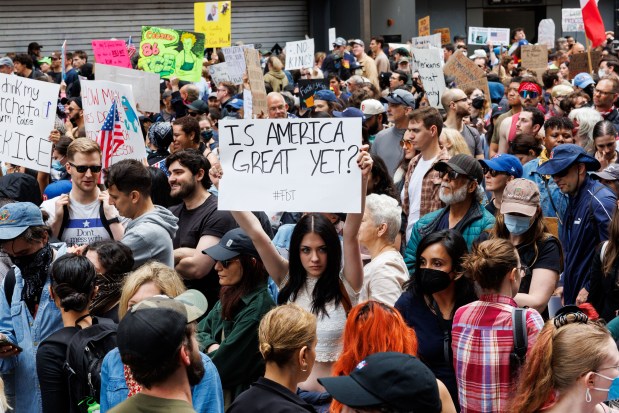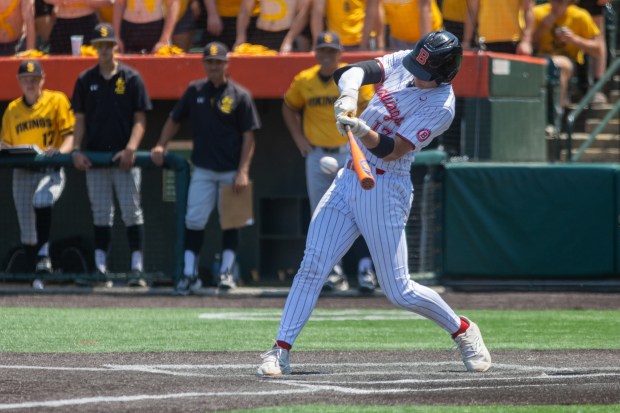Every week we publish a historic photo highlighting a story from Naperville’s past from the history archives of Naper Settlement.
With the heat of summer upon us, we’re taking a look back at one way folks enjoyed summer weekends in Naperville back in the late 1800s.
Burlington Park was built by the Chicago, Burlington and Quincy railroad company after tracks were laid between Chicago and Naperville in 1864. The idea was to provide an attraction that would help fill train cars on weekends when they would otherwise be empty.
Set on about 60 acres just outside Naperville, the park opened in 1880 and quickly became a destination for city dwellers lured by what was billed as “the most desirable and complete place for recreation in the vicinity of Chicago.”
A round-trip ticket on Sundays and holidays cost 50 cents for adults and 25 cents for children. That price included the train ride as well as admission to the park, music hall and refreshment hall.
And what a place it was. Amenities included a shooting gallery, photograph gallery, grandstand, gambling area, baseball park, race track, bowling alley, merry-go-round, refreshment hall and picnic groves.
Dining for up to 200 in the 100-foot-long dining hall was accompanied by live band music. The Dance Pavilion boasted an octagon-shaped, raised dance floor with a railing that separated dancers from spectators.
About 300 yards south of the railroad bridge, a dam was built on the DuPage River to create a lake for swimming and boating.
The park could accommodate as many as 20,000 people in one day. Some Sundays up to 10 trains were lined up to drop people off at the park and take them home again.
Organizations like the Knights of Columbus and Elks Club would host huge picnics at Burlington Park. The annual Scotchmen’s Picnic — held for the Highland Scots of Chicago and First Regiment of Royal Scots of Peoria — featured everything from bagpipe music to dancing in kilts to games showcasing athleticism.
In July 1896, Naperville hosted the Illinois Fireman’s Association Competition at the park.
Prior to the late 19th century, the concept of leisure and recreation was almost exclusively reserved for the wealthy. Working-class people had limited time off from work and little cash to spare for amusement.
That began to change with new labor laws and the standardization of the work week. The middle-class was growing and people had more time and money for leisure activities.
Trolleys, steamships and rail lines — like the one from Chicago to Naperville — not only made traveling easier but began to capitalize on people who wanted to take trips out of town. The lure of an outdoor picnic at a place like Burlington Park appealed to people who wanted to escape the congestion and pollution that came with city living.
Despite the popularity of venues like Burlington Park, not everyone was enamored with using Sunday, the Lord’s Day, for such frivolity. And some Naperville parents forbid their children from going to the park because they feared the “rough elements of Chicago” who visited it.
For nearly two decades, the park thrived so it came as a surprise when it suddenly closed in 1899.
No reason was given, but one theory was the railroads started to fear the liabillity that could result from an accident due to so many people waiting on train station platforms to head back into Chicago.
After it closed, the park buildings were allowed to deteriorate. Some local farmers used the grassy areas where picnics had been to graze their dairy cows.
In 1922, the Forest Preserve District of DuPage County bought the property for a mere $852.50. The price would still be a bargain today — the cost in 2024 dollars would be $15,942.51, according to www.usinflationcalculator.com.
What had been the park grounds is now Burlington Park Forest Preserve.
Andrea Field is the curator of history at Naper Settlement. For more information, go to www.NaperSettlement.org. Steve Metsch is a freelance reporter for the Naperville Sun.





